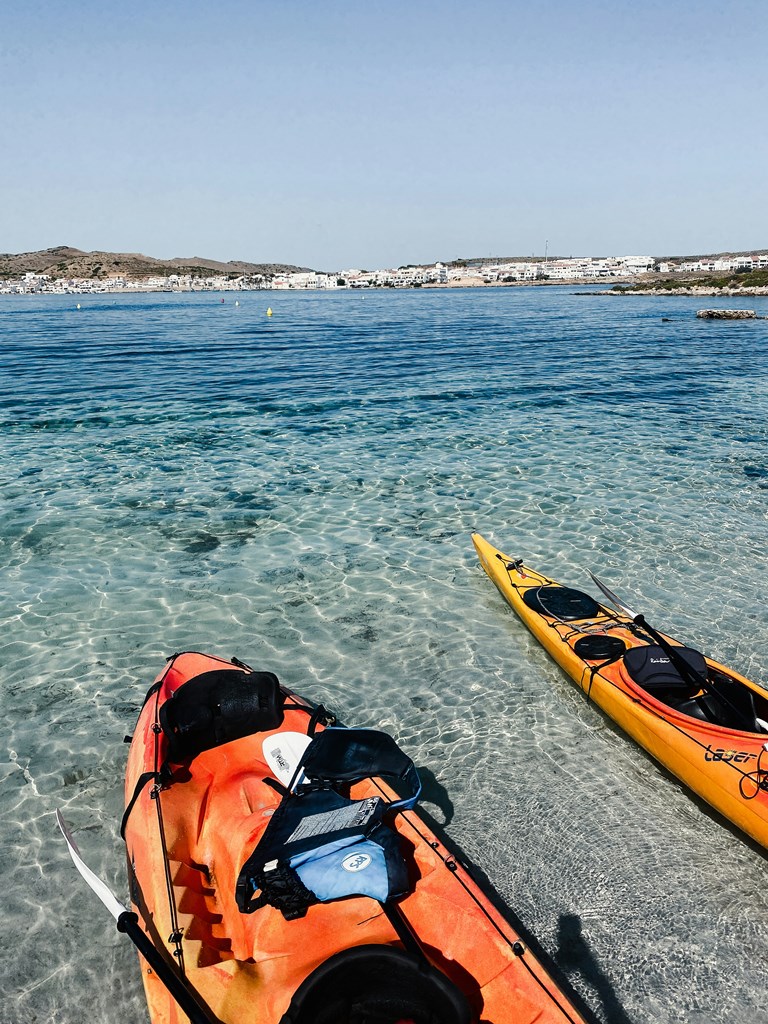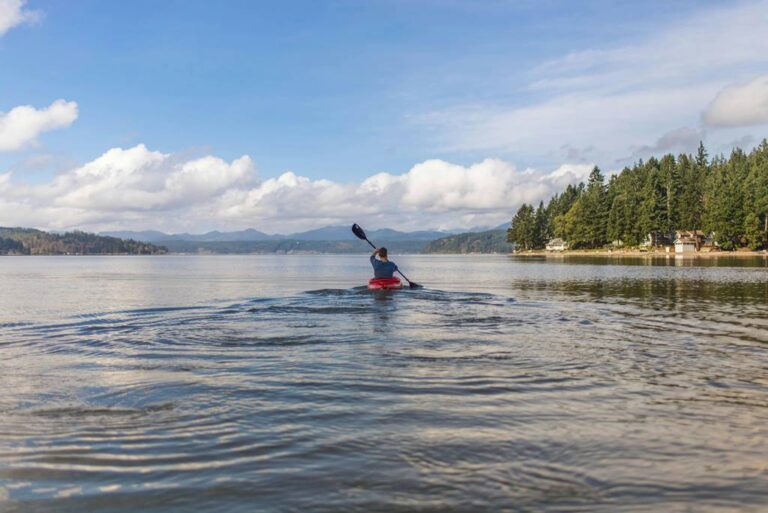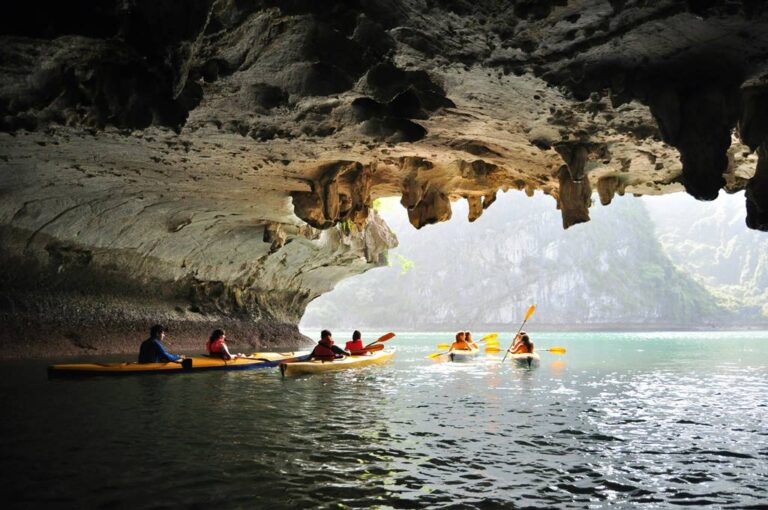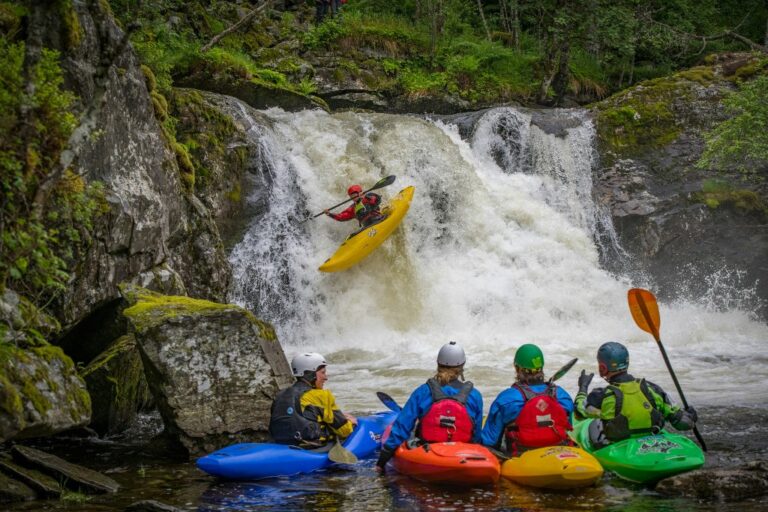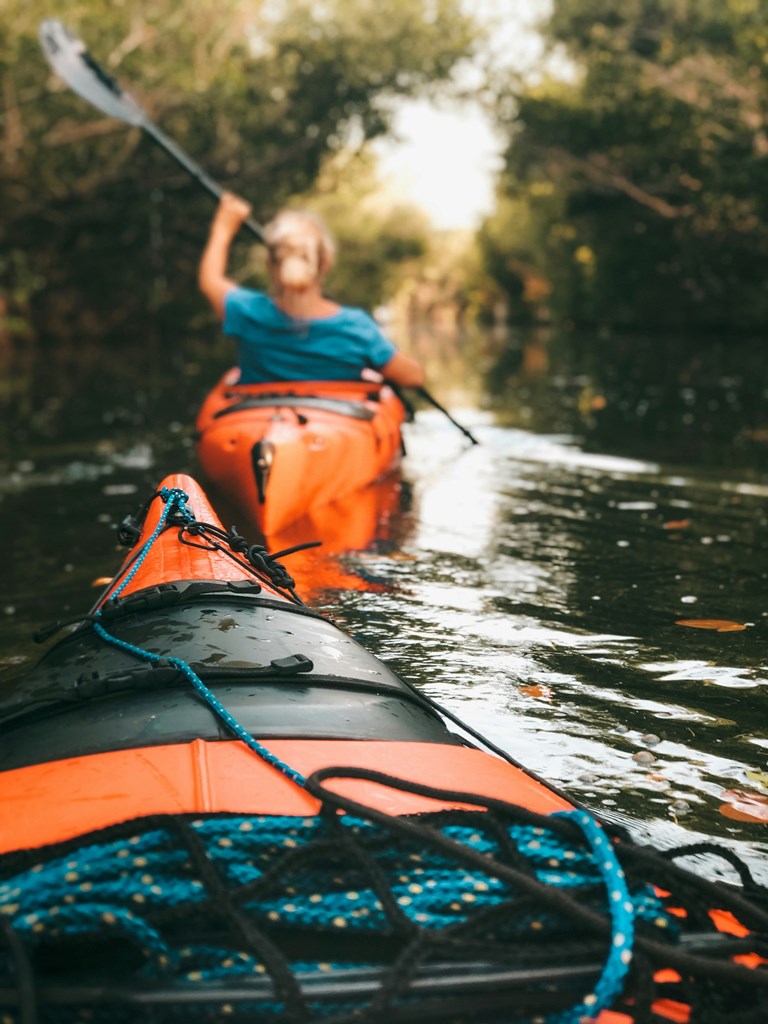
While recreational kayaks are designed for fun and ease of use, there are still factors to consider for the best paddling experience. These factors include weight, speed, tracking ability (how well it travels in a straight line), and comfort. Luckily, most recreational kayaks offer years of enjoyment for casual paddlers.
Beyond recreational paddling, kayaks unlock a world of waterborne adventures. You can use them to reach hidden coves, explore delicate ecosystems like estuaries, or simply enjoy a scenic workout on a local lake. The key to choosing the right kayak is to consider how you’ll be using it. Think about where you’ll paddle (lakes, oceans, rivers), whether you prefer the security of a sit-in or the ease of entry/exit of a sit-on-top, and how much weight you need the kayak to handle (which is often tied to budget). Once you have these questions answered, you can narrow your choices based on shape, size, and features to find the perfect kayak for your paddling needs.
Here’s a consideration to keep in mind: cost, weight, comfort, tracking, and safety
Cost
While price is a factor, finding the right value for your paddling needs is key. A top-of-the-line kayak used infrequently might not be the best investment, and a budget-friendly option that sits unused won’t bring you joy. Focus on finding a kayak that aligns with your budget and paddling habits. A frequently used $500 kayak could provide years of enjoyment, while a rarely used $1,000 model might not be worth the initial investment. Consider how often you’ll realistically use the kayak before committing to a price point. This will ensure you get the most value out of your purchase.
Weight
Don’t just focus on the price tag – think value! A top-of-the-line kayak used once a month might not be the best investment, and a budget-friendly option that gathers dust in the garage won’t bring you joy. The key is finding a kayak that aligns with your budget and paddling habits.
Weight is a big factor in both value and paddling experience. Lighter kayaks are easier to load onto your car and maneuver on the water, especially for solo paddlers. This makes them ideal if you prioritize easy transport and solo paddling. However, lighter materials often come at a higher price tag. If you have help loading or prioritize stability over easy transport, a slightly heavier kayak might be a good option. Think about how you’ll get your kayak to the water and how much effort you’re comfortable with for loading and unloading. This will ensure you get the most value out of your purchase.
Comfort
Comfort is an investment in your paddling enjoyment. While a plush seat might seem like a luxury expense upfront, it can make the difference between a relaxing paddle and a back-aching chore. Unlike some kayak parts, seats are often difficult to replace later. Manufacturers known for comfortable seating design their kayaks around the seat for optimal support and positioning.
Think about the typical length of your paddling trips. If you plan on spending extended hours on the water, prioritize comfort. A comfortable kayak is one you’ll be more likely to use frequently, making it a worthwhile investment in the long run. Many customers rave about the difference high-end seats make in their paddling experience – a testament to the long-term value of choosing comfort over a slightly lower initial price tag.
Tracking
While recreational kayaking isn’t about speed or making quick turns, effortless paddling and smooth cruising are key to a relaxing experience. That’s where tracking comes in. Imagine paddling long distances and constantly fighting to keep your kayak straight – not exactly enjoyable! Modern recreational kayaks prioritize good tracking thanks to improved hull designs. Sharper entry and exit lines reduce drag in the water, and stiffer materials prevent the kayak from flexing, making it easier to keep your course. The result? You’ll spend less energy correcting your path and more time soaking up the beauty of your surroundings. Think of it as an investment in your paddling enjoyment – less effort translates to more time for relaxation and taking in the scenery.
Safety
Safety should always be a top priority, even on calm water. While recreational kayaks are designed for stability, unexpected situations can arise. Here’s where prioritizing safety features comes in.
Flotation is key. Many basic recreational kayaks have minimal buoyancy, making getting back in after a capsize difficult. Look for kayaks with watertight bulkheads and hatches, especially in the stern. These compartments not only provide extra floatation but also offer dry storage for essential safety gear like a first-aid kit and a whistle.
While a wider, stable design minimizes the chance of tipping over, it’s always a good idea to be prepared. Choosing a kayak with good flotation allows you to focus on getting back in and enjoying your paddle with confidence, rather than worrying about staying afloat. Remember, safety features might add a bit to the cost, but they’re an investment in a worry-free and potentially life-saving kayaking experience.
Conclusion
Choosing your perfect kayak isn’t rocket science, but it’s more than just grabbing a paddle and hopping in! Recreational kayaks are a gateway to paddling fun, but consider your needs and wants first. Think budget, weight (for both paddling and transporting), comfort for long rides, how easily it tracks (stays in a straight line), and most importantly, safety features. Finding a kayak that checks all these boxes will ensure you get the most out of your paddling adventures. Remember, a well-chosen kayak is an investment in years of aquatic fun and memories – so get out there and explore!

